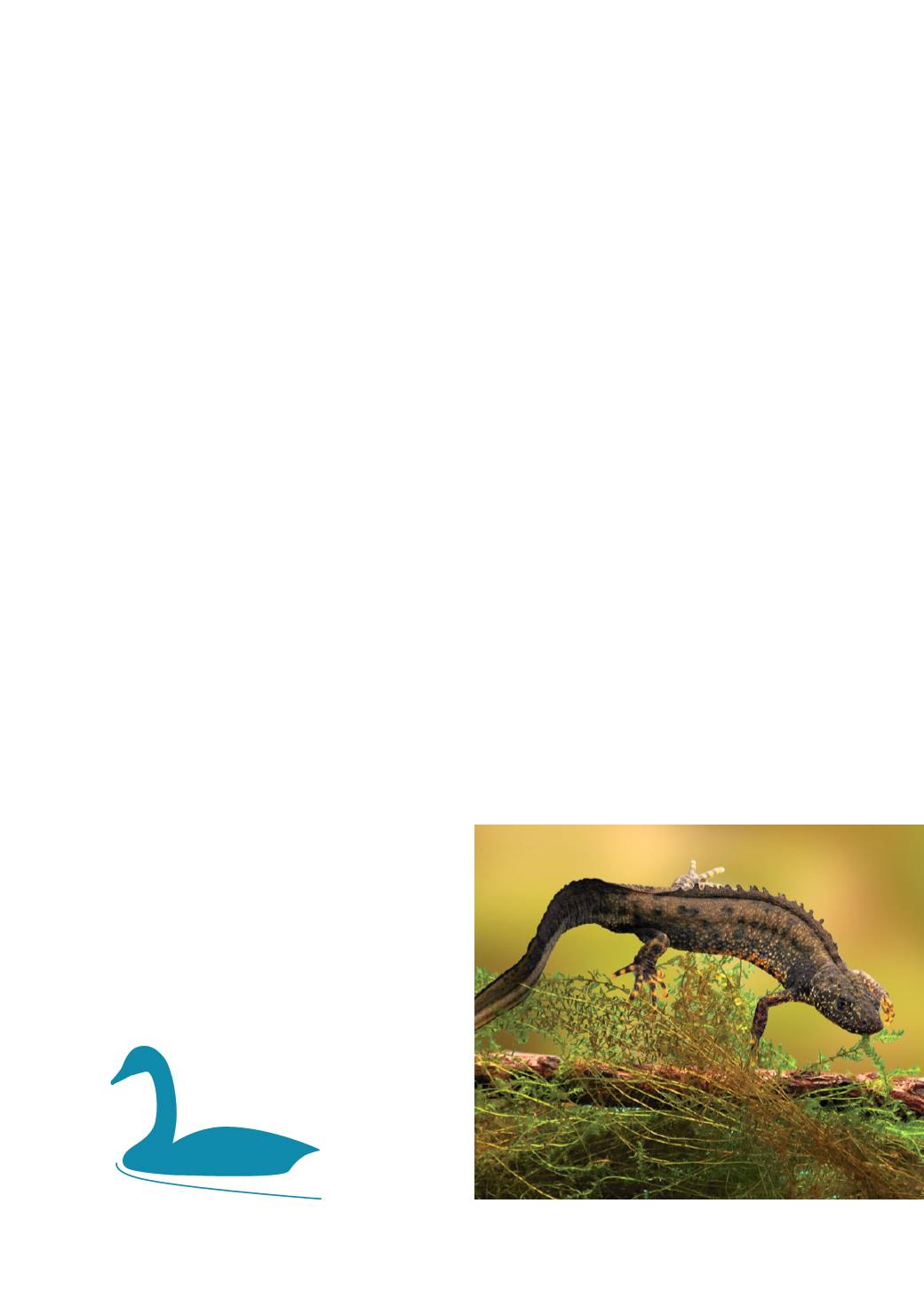
11
WWT Report and Financial Statements 2012/13
pairs. WWT continued to work with the international
and multi-organisational partnership to help address
the threat of trapping spoon-billed sandpipers on the
wintering grounds in Myanmar. We also helped garner
governmental support for an IUCN motion (that we co-
sponsored) on the conservation of intertidal areas along
the East Asian-Australasian Flyway at the IUCN World
Conservation Congress in South Korea.
The new Ramsar Wetland Disease Manual was launched
at the Ramsar Conference of Parties (COP11) in Romania
in July 2012. This comprehensive guide provides practical
information for wetland managers and decision makers
globally on the interface between diseases of wildlife,
humans and domestic stock in wetlands, and how to
manage for and control them.
A side event was also run at COP11 to announce
the World Wetland Network (WWN) Wetland Globe
awards, with blue globes for best practice in wetland
management, and grey globes for wetlands under threat.
Eleven wetlands received awards over six continents (see
; this should promote best practice
and conservation of these wetlands.
Management plans have been developed in consultation
with local communities for both of the important wetland
sites where we work in Cambodia. These plans are
currently being ratified by the Royal Government of
Cambodia and will guide the next phase of our work.
Wetland Link International (WLI) network development
continued and the 4th WLI Asia meeting took place in
Suncheon, South Korea. The Head of WLI was confirmed
as a member of the Ramsar CEPA (Communication,
Education, Participation and Awareness) oversight panel
and the East Asian-Australasian Flyway Partnership
(EAAFP) CEPA Working Group. The new WLI website
(
) was launched with a better regional
forum and multi-lingual framework.
At the African-Eurasian Waterfowl Agreement Meeting of
the Parties (AEWA MoP 5) WWT successfully lobbied for
commitment to ensure that Parties must not only phase
out the use of lead shot from wetlands but also monitor
the effectiveness of national measures already taken, and
understand and address barriers to their implementation.
WWT Consulting
WWT Consulting delivers a range of projects across four
sectors, which are Ecological Surveys and Assessments
(ESA), Habitat Design and Management (HDM), Visitor
Centre Planning (VCP) and Wetland Treatment Systems
(WTS). In 2012/13 WWT Consulting worked on 63
projects of which 55 were new projects during this
accounting period.
WWT Consulting worked on 23 ESA projects, all located in
the UK. For over a decade WWT Consulting has collected
and analysed marine waterbird and mammal data for
the identification of marine Special Protected Areas
as well as providing ecological information for offshore
renewable energy developments. In addition WWT
Consulting has developed its expertise in marine spatial
planning to support statutory agencies such as Natural
Resource Wales and Natural England. WWT Consulting
was commissioned by both Natural Resource Wales and
Natural England to undertake seabird sensitivity mapping
in Welsh and English waters respectively and has been
working with the Scottish Government on a strategic
assessment of collision risk of wind farms to migrating
birds in Scotland.
In addition, numerous ecological surveys were undertaken
including Phase I and National Vegetation Classification
(NVC), great crested newt surveys, and aquatic and
terrestrial invertebrate sampling at a SSSI for Spelthorne
Borough Council to inform the site’s management plan.
Within our HDM sector we continue to work on both
national and international projects, having worked on 15
projects during this accounting period. These include
the design and build of a multifunctional wetland for
Horsell Common Preservation Society, due to open to
the public in June 2013. Other design and management
recommendations have been provided for a Heritage
Photo: great crested newt, © WWT


